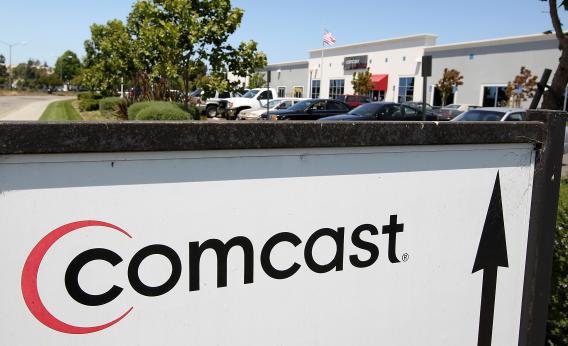Tim Lee has two great posts up about the extremely annoying pricing practices at Comcast and other cable companies.
To get a brief economic overview, the issue is that the fixed costs of running a cable network are high (i.e., it’s expensive to build and maintain the system), the marginal costs are low (adding a new household is cheap), and the level of competition is low (i.e., DSL is markedly worse than cable internet in most markets). This creates a situation in which if Comcast draws the supply and demand curves and picks the profit-maximizing price, lots of people are going to refuse to buy cable internet at that price. But many of those people would buy internet access at some different lower price, and since marginal costs to Comcast are low it would be in Comcast’s interest to offer that price to those customers. So the way this plays out in practice is that they offer low teaser rates that are well below the profit maximizing price, then they raise the rates, then if you call up and threaten to cancel service they’ll knock you back down to a lower price. If you go all the way and actually do switch to DSL (at the low introductory price, naturally) then you’ll be very credible when you switch back to cable for the fully discounted price.
This kind of rationing-by-hassle manages to make everyone hate you.
From a busines strategy viewpoint, what’s needed are telepaths. Telepathic customer service reps could assess your subjective willingess to pay and implement a perfect price discrimination strategy without annoying anyone.
From a public policy viewpoint, this is where the old-fashined idea of a “regulated utility” is supposed to come into place. A regulator could just say forget about DSL, this is a natural monopoly business and we’re not going to count on very limited market competition to discipline Comcast. Instead, we’re just going to make Comcast charge everyone a flat low rate at which revenues are sufficient to cover costs. To preserve Comcast’s incentive to innovate, we’re going to tell Comcast that the regulators’ door is always open if they want to show up with a proposal to improve the quality of the network. The proposal will include estimates of how much additional revenue will be necessary to implement the plan, and then if we decide that faster broadband is a priority will give the thumbs up to building the new network.
The risk here is that appointing good cable regulators is probably not a top priority for the median voter while appointing company-friendly cable regulators is a very high priority for Comcast’s lobbyists. So in practice, after having decided to use regulation rather than competition to discipline the market you’ll end up with foxes guarding the henhouse. In the real world, in other words, your mileage may vary with regulation. But in principle it’s the optimal approach and jurisdictions that are able to create a well-functioning regulatory agency should have a significant advantage.
